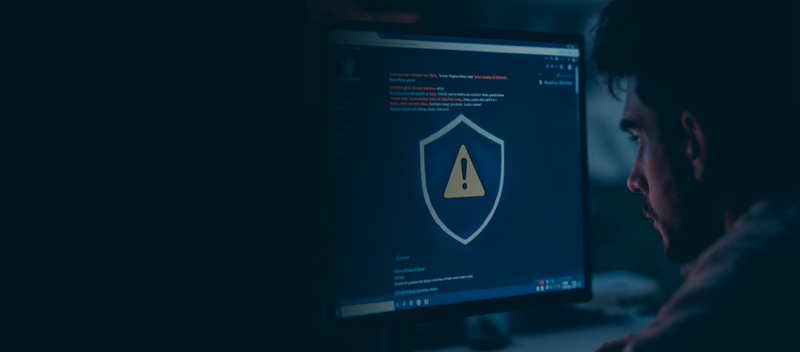Blog Top Regulatory Certifications to Improve Your Company’s Security Profile
Top Regulatory Certifications to Improve Your Company’s Security Profile

Cybersecurity compliance and regulatory certifications perform crucial business functions. They help companies navigate the threat landscape, protect digital assets from cybercrime, avoid steep legal penalties, and establish trust with their customers, partners, and stakeholders.
But with dozens of compliance frameworks available, choosing the appropriate framework and certification can be a daunting task in itself. To make it easy for you to make the right decision, here’s a quick guide to the top ten compliance frameworks that have a high likelihood of meeting your security and business requirements.
For more on our Compliance Services, Click Here
1. ISO/IEC 27001
DESCRIPTIONA global standard jointly published by the International Standards Organization (ISO) and the International Electrotechnical Commission (IEC) for establishing and maintaining an effective Information Security Management System (ISMS), which is aimed at helping organizations protect their information assets. |
WHO NEEDS IT?Tech-driven organizations whose customers, partners, or investors require ISO 27001 certification (typically companies that do business in Europe, APAC business centers, and other locations around the world; SOC 2 compliance often — but not always — suffice in North America) |
2. PCI DSS (Payment Card Industry Data Security Standard)
DESCRIPTIONA set of security standards developed by the payment card industry (PCI) to protect card holder data, secure payment card transactions, and reduce fraud. |
WHO NEEDS IT?All merchants and service providers store or process cardholder data. |
3. HIPAA (Health Insurance Portability and Accountability Act)
DESCRIPTIONA major US legislation that sets the regulatory standards on the protection and legal disclosure of sensitive patient health information. |
WHO NEEDS IT?• Healthcare providers such as hospitals, nursing homes, pharmacies, clinics, and doctors |
4. GDPR (General Data Protection Regulation)
DESCRIPTIONA comprehensive EU legislation that enforces data protection and privacy standards, covering all organizations that handle the personal information of individuals residing in the European Union. |
WHO NEEDS IT?All organizations that handle personal data of individuals residing in the EU regardless of the organization’s location.
|
5. SOC 2 (System and Organization Controls 2)
DESCRIPTIONAn auditing framework that specifies how organizations should manage data across five core criteria: security, availability, processing integrity, confidentiality, and privacy. Developed and maintained by the American Institute of Certified Public Accountants (AICPA), SOC 2 helps establish trust between organizations and has become best practice across industries. |
WHO NEEDS IT?Any organization that handles sensitive information such as personal, health, or financial data. While not formally legislated, SOC 2 compliance has become industry best practice and a due diligence requirement for doing business with many organizations, especially during vendor selection processes. |
6. CMMC (Cybersecurity Maturity Model Certification)
DESCRIPTIONA security assessment framework developed by the U.S. Department of Defense (DoD) to ensure the protection of controlled unclassified information (CUI) that are shared with defense contractors and subcontractors. |
WHO NEEDS IT?Crucial for organizations that intend to do business with the DoD. |
7. NIST CSF (National Institute of Standards and Technology Cybersecurity Framework)
DESCRIPTIONA voluntary framework developed by the U.S. government to help organizations manage and mitigate cybersecurity risks. The framework consists of high-level, outcome-driven guidelines originally intended for critical infrastructures but have proved highly adaptable for any type and size of organization. |
WHO NEEDS IT?Any organization aiming to maintain best practices and improve its security posture. NIST CSF can be implemented and customized by businesses of all sizes, sectors, and maturities. |
8. CCPA (California Consumer Privacy Act)
DESCRIPTIONA privacy law enforced in the U.S. state of California that provides residents with specific rights regarding their personal data, sets specific obligations on for-profit businesses that collect and process such data, and imposes penalties when such obligations are breached. |
WHO NEEDS IT?For-profit organizations that conduct business in California, handle the personal information of state residents, and meet at least one of several specified conditions, including: |
9. HITRUST CSF (Common Security Framework)
DESCRIPTIONA comprehensive framework that incorporates various regulatory and industry standards into a unified approach for managing cybersecurity, privacy, and compliance. Among these incorporated standards include those from HIPAA, GDPR, PCI-DSS, and ISO/IEC 27000-series. |
WHO NEEDS IT?• Any organization that seeks to improve the way it handles and secures sensitive data such as personally identifiable information (PII), protected health information (PHI), and customers’ financial information. |
10. CSA STAR (Cloud Security Alliance Security, Trust, and Assurance Registry)
DESCRIPTIONA program and publicly accessible registry that documents the information security controls and privacy protections implemented by participating cloud service providers (CSP). |
WHO NEEDS IT?• Cloud service providers that want to demonstrate commitment to information security and regulatory compliance. |
Conclusion
Compliance with strident regulatory standards help improve your security posture and protect your customers and digital assets from different types of cyber threats.
Here are some additional points to consider:
1. Compliance frameworks and regulatory standards evolve over time. Keep your policies, protocols, and certifications up to date.
2. Choose the certifications that are most relevant to your organization. Some frameworks are mandated by industry regulators. Some are voluntary but still worth complying with.
3. Consider regulatory compliance as a strategic investment and not merely an IT expense.
4. Partner with the right compliance service providers. Doing so can accelerate your compliance journey, cut costs, and yield better outcomes. Whenever applicable, work with qualified/accredited cybersecurity consultants to help you through the certification process.
A third-party validation of your compliance with a relevant security framework demonstrates your commitment to data protection, privacy, transparency, and best practices. That in turn will improve trust in your brand and enable you to engage prospects that demand high security standards as a precondition for doing business.
Secure your business with TrustNet’s top-tier compliance services. Talk to an expert today.




